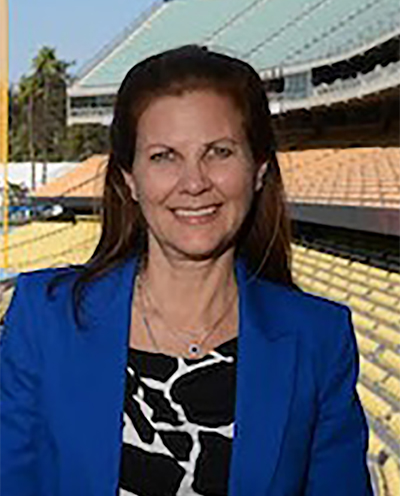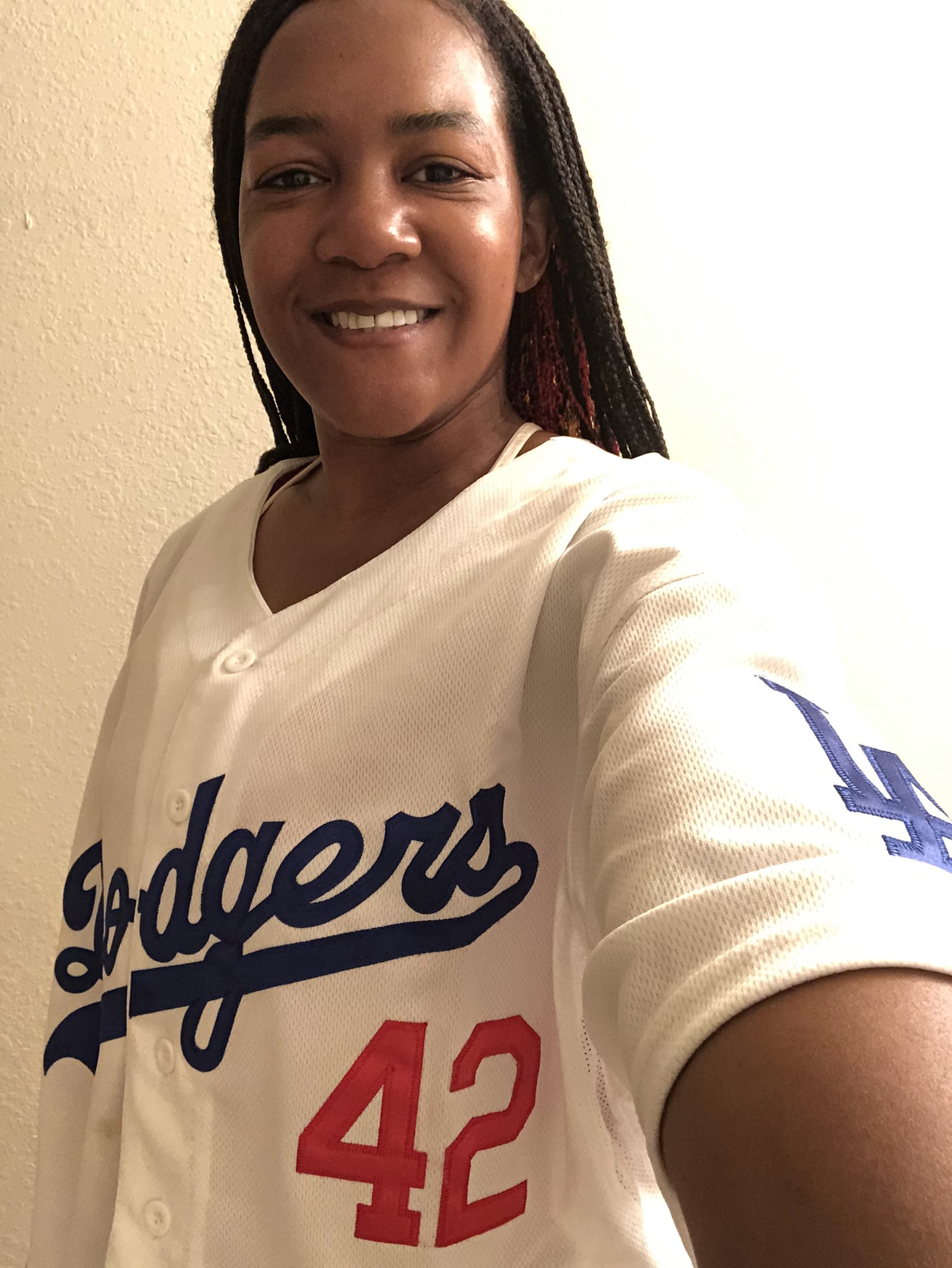The Future of Women in Baseball: An interview with Janet Marie Smith and Bianca Smith
This article was written by Katie Krall
This article was published in The National Pastime: The Future According to Baseball (2021)
When does a moment become a movement? If you’d asked just two years ago what the future held for women in baseball, we might have said that the changes that have taken place over the past several years weren’t coming until 2040. But since 2018, the world has watched trailblazing women break glass ceilings in baseball that many believed would never be shattered in their lifetimes. From Alyssa Nakken being hired by the San Francisco Giants as the first full-time female coach in MLB history to Kim Ng ascending to the top of the Miami Marlins front office as general manager in November 2020, progress has been made with significance that transcends the sport.
Against this backdrop, some might say that we are entering a golden age for women in the game—one that recognizes the value and importance of diversity on and off the field. To assess where the industry stands, I sat down with Janet Marie Smith, Executive Vice President of Planning and Development for the Los Angeles Dodgers, and Bianca Smith (no relation) a minor league coach for the Boston Red Sox. Janet Marie has constructed and renovated some of the most iconic stadiums in baseball including Camden Yards, Fenway Park, and Dodger Stadium. Bianca’s hiring this off-season made her the first African American woman to serve as a professional baseball coach for an affiliated team. As a Baseball Operations Analyst for the Cincinnati Reds and product of the inaugural class of MLB’s Diversity Fellowship program, I wanted to share our perspectives on what the future of women in baseball will look like during this decade and beyond. The following conversation has been edited for clarity and length.
 KK: Thank you both for being here! Janet Marie, how do you think the response to women in the game has changed during the course of your career?
KK: Thank you both for being here! Janet Marie, how do you think the response to women in the game has changed during the course of your career?
JMS: It’s obviously far more accepted today. To see you Katie and Bianca in the game, that is just amazing! The data has [sic] proven over and over again that some of the most successful companies have a woman’s voice. We also see a lot more women playing sports and I think Title IX did everything we hoped it would do when it passed. It’s not nearly as foreign an idea as it was a generation ago because you all have grown up with that as your norm.
KK: Completely! To your point Janet Marie about Title IX, Bianca, you played a number of sports at Dartmouth and now you’re on the field for the Red Sox. Can you speak to that transition and what made you want to put on a uniform again?
BS: At Dartmouth, I’ll admit I was not planning on playing baseball. I played in high school but got hurt my senior year and convinced myself that I wouldn’t be good enough to play in college which is why I ended up being a cheerleader instead and walked on to the softball team. One month later, the club baseball team was started. I really wanted to play baseball so I decided to do both!
It was around that time when I knew I wanted to work in baseball, originally in the front office, and in grad school I was shagging balls during BP wearing jeans, shorts, sweatpants and I went through so many pairs of pants that I said to our coach, ‘Hey, I need some baseball pants.’ Putting the uniform back on and then actually getting to work with the players running drills, throwing batting practice, my position went from your typical Director of Baseball Ops to actually being a coach on the field. That’s when it really hit me—I enjoyed working with players and helping them get better.
KK: That is so cool to hear. I love that moment of you putting the baseball pants on and immersing yourself in that world because you knew that was where you belonged. Janet Marie, what do you recommend for women looking to enter the industry?
JMS: You two are probably the perfect examples of this—you have to map your own way. Waiting for a job to be posted or someone to find you is rare. The way I got into baseball is I went to Larry Lucchino who was then president of the Orioles. I knew he wanted to build a park in downtown Baltimore and harken back to the old days to feel like part of the city and I thought that was something I could do. From what I just heard Bianca say and what I know of your career, Katie you’ve done the same. That’s an extraordinary thing to be able to do, to find an opening and a need and figure out how your skillset can fit that need.
 KK: Absolutely, taking the initiative and going after your dreams. Bianca, Janet Marie mentioned Larry Lucchino being one of her mentors and taking a chance on her with Camden Yards. How would you say your mentors have supported you?
KK: Absolutely, taking the initiative and going after your dreams. Bianca, Janet Marie mentioned Larry Lucchino being one of her mentors and taking a chance on her with Camden Yards. How would you say your mentors have supported you?
BS: The mentorship I’ve received from coaches has helped me feel comfortable enough to actually share my opinion. When you’re a new coach, it doesn’t matter if it’s the major league level or not, any place you go, you hesitate to just jump in because you don’t want to be the coach that immediately begins giving instruction. Having coaches who not only encourage you to ask questions, but also answer them and get you involved is really helpful and easier for you to make that transition than trying to figure out on your own, Okay, when am I comfortable enough to start giving my input? Knowing there are so many coaches who have my back and want me to succeed is important too. I’m sure there are plenty of people, even in this industry, who don’t want to see women do well. It’s a hard truth, but they’re there. So knowing that there are people who do have your back is helpful.
KK: Janet Marie, Bianca brought up the art of entering into a conversation and sharing your opinion. How do you know when to add input or hold back?
JMS: I try to find a right balance between staying in my lane and speaking up when I know that I am the expert on something or a broader point that needs to be made. I can talk about my projects all day long— what we want the building to be, where we want to take it, everything from the transportation to the graphics—I love talking about those things and I’m comfortable in that role, but then I try to make certain that I don’t simply have an opinion on everything. I still even now find it hard to pipe up sometimes on things that aren’t neatly in my corner.
KK: That’s an interesting philosophy, not necessarily commenting on everything, but when you are the authority being willing to come forward and share what you have to say.
JMS: I think it’s really important to add a perspective that isn’t already on the table. Sometimes that perspective feels like it’s learned by osmosis and that’s a harder thing to speak about than if, for example, you’re the only one in the room who understands the process for the city approving this project. Whereas for a topic like “How should we react to Black Lives Matter?” I certainly have an opinion and see some aspects of our organization by living in an urban community that maybe others don’t, but you want to make sure you have an opportunity to say those things that are totally in your wheelhouse.
KK: As more organizations recognize the benefit of having a diverse workforce, how can teams and the league office create an environment of authentic allyship?
JMS: I really admire the initiatives that MLB has taken. I see candidates come through that [MLB diversity hiring] program as rock stars just like you are. The Dodgers have a summer program that is specifically targeted toward minorities and I’ve had some fantastic students. I have often said to my team when we hire someone for this, we’re not using these 12-weeks to bring in someone who has already worked for Fox Sports and the Mets. This is meant to be an opportunity for someone who has never had professional experience to be here so that the next time they go to interview for a job, they’re able to say that they have that experience. It’s the hardest thing in the world to break that first barrier.
BS: Agreed. One thing the league and teams can do is giving minorities responsibilities based on what they actually bring to the table. I speak from experience a bit here, but when a minority is hired for a high profile position, emphasizing why they were hired is so important, not just “we hired a minority for this position.” Focus on why you actually hired them. You have to emphasize this is what they’re good at rather than this is what they look like.
KK: The position that they were hired because they were the best coach or analyst in the applicant pool. We’re recognizing that they have a different identity or affinity status, but at the end of the day we’re hiring them because of what they add to the organization. Who faces the steeper uphill battle—the next Bianca Smith or Kim Ng?
BS: There are different obstacles for both. For women in the front office, there are more role models that you can look to so more women are going to try for those positions. Kim’s the first general manager, but everyone knows she should have been a GM years ago. So as of right now, I think it would be a little harder on the coaching side, but you’re still going to face challenges either way.
KK: That’s such a balanced answer. I’ve always found it absurd that for years to be a coach you needed to have playing experience at the professional level in baseball, but for basketball or football you didn’t face that same requirement and you could have a high-ranking position. I think it’s a dynamic that people cling to, but doesn’t necessarily shake out when you look at other sports.
BS: Some of the worst players can be the best coaches, probably because they were the worst. It’s not being able to do it yourself, it’s translating it for a player and making it effective for them. As long as you can do that, it doesn’t matter if you can hit a 100 MPH fastball, just help the player figure out how to do it.
KK: Exactly, you’re the teacher. Any final thoughts about the future of women in baseball?
JMS: The fan base for baseball is so evenly split for gender [sic] and we should never forget about that. The part of my work that I enjoy the most is positioning things so fans can enjoy the game and create an environment where a rabid fan can count every pitch and keep score, but if he or she is there with other people who just want to experience the atmosphere, they can enjoy that too. I think it’s important that as we think about the future of baseball, we consider all levels of being a fan. Youth baseball is particularly important to grow the game and keeping ticket prices at a place where youth can come and families can feel good about bringing their kids to the ballpark. It’s not totally in the category of gender, but it is in a way since it impacts 50% of your fans and 50% of your potential fans.
A brief anecdote from several years ago: I had a chance to work on the Dodgers’ Dominican facility and we had designed the building to have a women’s locker room. When our head trainer Allison Wood got there she was thrilled to see that there was a place for her to shower, dress, have privacy, but she wanted a locker with the men. Allison said I don’t want to miss out on the banter, socializing or the occasional conversation that’s not scripted, I want to be part of the team. We worked really hard to redesign things so the men could also shower and dress privately, but there would be a way for all of them to be comfortable in the clubhouse and opportunity for those conversations. I hope as we think about facilities going forward we consider the physical space so that women in uniform feel comfortable in that place and feel equal.
KK: That’s part of the reason why I think your job is so amazing, Janet Marie, is because you’re curating spaces so whether it’s a family going to a Dodgers game or Allison, you’re helping people fill a specific need. To your earlier point about half of the fan base being female, I wrote a paper when I was an undergraduate at Northwestern on Ladies Day at Wrigley Field in the 1930s. The Cubs couldn’t believe the number of female fans who would turn out for these free tickets, many of whom would camp overnight! So you’re right, that there has always been a zealous female fan base out there that we need to acknowledge and support because they’re an important part of the long-term success of this game.
JMS: You’ll have to send that paper to me, Katie!
BS: Along those lines of the fan base being split, I will say that personally as a fan, MLB could do better with things like jerseys. I don’t know many women who like a women’s cut for a jersey. So something as simple as that is important. Recognizing that women are fans and they’re not attending games because of their husbands, fathers, brothers, boyfriends, etc. it’s because they actually enjoy the game.
As far as women working in baseball, I’m optimistic. This is my 12th year in the industry and I’ve seen a lot of growth and change. Yes, there’s still a lot to do. Not just getting more qualified women in the game but also keeping them in the game so they feel like they belong. Acknowledging who is in the front office and on the field and figuring out what is the best way that everyone can be comfortable.
 KK: Agreed, leaning into the conversation and saying that this is a priority. We recognize it and we’re here to make change.
KK: Agreed, leaning into the conversation and saying that this is a priority. We recognize it and we’re here to make change.
KATIE KRALL is in her second season as a Baseball Operations Analyst for the Cincinnati Reds. In her role she develops tools to improve decision-making processes for roster construction, game planning and R & D in addition to providing pro scouting coverage. Krall previously worked for 18 months at the Office of the Commissioner of Major League Baseball. In 2016, she planned the World Series Trophy Tour for the Chicago Cubs. The following summer, she was an Assistant General Manager in the Cape Cod Baseball League. She graduated from Northwestern University and is pursuing her MBA from the University of Chicago.


